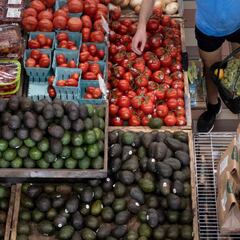Where is the local food stamp or SNAP office near me?
The federal Supplemental Nutrition Assistance Program, also known as Food Stamps, is administered through the states where applications must be filed.

The Supplemental Nutrition Assistance Program (SNAP), previously called Food Stamps, is the largest food assistance program in the United States with over 41 million people receiving benefits. The program is a federally funded providing eligible, low-income individuals and families assistance to avoid food instability.
The program however is run at a state level which means the benefits, which agency handles them and even the name vary state by state. This can cause confusion for those who have never used the program and need the assistance, the number of whom rose by some 6 million Americans since the start of the covid-19 pandemic.
Also see:
- What are the requirements to apply for food stamps?
- Do SNAP benefits expire? How can I cancel my SNAP benefits online?
- Which stores accept WIC and EBT food stamps? Walgreens, CVS, Rite Aid
- Which fast food restaurants accept EBT food stamps?
- Childhood poverty up by 40% after Child Tax Credit expiration
Where to find your local SNAP office
The Food and Nutrition Service (FNS) of the US Department of Agriculture (USDA) manages the nutrition assistance program at a national level. But those seeking to get information or apply for benefits must contact their local SNAP office. Applications are not processed by the FNS headquarters, and each state has its own application form.
You can get specifics by checking your state’s online benefits portal or calling the contact number provided on the SNAP State Directory of Resources webpage. By clicking on your state, you can find the contact information for your state along with application information.
Depending on the webpage for the agency which runs the program in your state there may be additional information available there. You can also find your local office listed under "Food Stamps," "Human Services," "Public Assistance," "Social Services," or such in the government pages of telephone books.
There is also the option calling the SNAP toll free line at 1-800-221-5689 or email the USDA with inquiries about benefits.
Celebrate #AgDay by taking a trip to the farmer's market. 👨🌾 FNS programs such as WIC, SNAP, and the Senior Farmer's Market Nutrition Program make purchasing farm-fresh goods more accessible. #AgWeek pic.twitter.com/w5qCnhCqh1
— USDA Nutrition (@USDANutrition) March 22, 2022
Who is eligible to receive food stamps?
The USDA has outlined three high-level conditions for eligibility that state agencies must comply with, they include: your household income; the household’s combined resources; and the employment situation of claimants.
The upper household income threshold for SNAP eligibility is based on the number of people in the household, with a higher limit for those with more people. The maximum gross monthly income is 130% of the federal poverty level, which can be found on these Federal Poverty Guidelines Charts.
To receive benefits most claimants may not exceed $2,250 in countable resources, which includes any money in bank accounts. However, for households with at least one person aged 60 or older or who is disabled, that limit is upped to $3,500.
Finally, the employment situation of the claimant is also taken into consideration. Recipients may not intentionally leave a job or reduce their working hours to satisfy the requirements. Claimants must be registered to work and take a job if one is offered to them.
DID YOU KNOW?: For every $1 that a gardener spends on seeds and fertilizer, they’ll reap about $25 worth of food. For someone relying on government assistance, that kind of return on investment is unbeatable. https://t.co/oY9xqL9tD6
— Jade Walker (@jadewalker) March 22, 2022
Exceptions to the SNAP payment requirements
The general guidelines apply to the majority of potential recipients but there are some exceptions for certain groups. If the claimant is elderly, disabled, pregnant or younger than 18 then they may not have to satisfy the employment requirements.
Related stories
The nutritional assistance is not necessarily limited to American citizens alone, and some groups who are legally admitted into the country can also claim.
The federal SNAP help page lists the following as non-citizens eligible for food stamps: “Parolees, deportation withhold status, conditional entrants, Cuban or Haitian entrants, battered non-citizens, refugees, trafficking victims, Iraqi or Afghan special immigrants, Hmong or Highland Laotian tribal members, or certain American Indians born abroad.”


